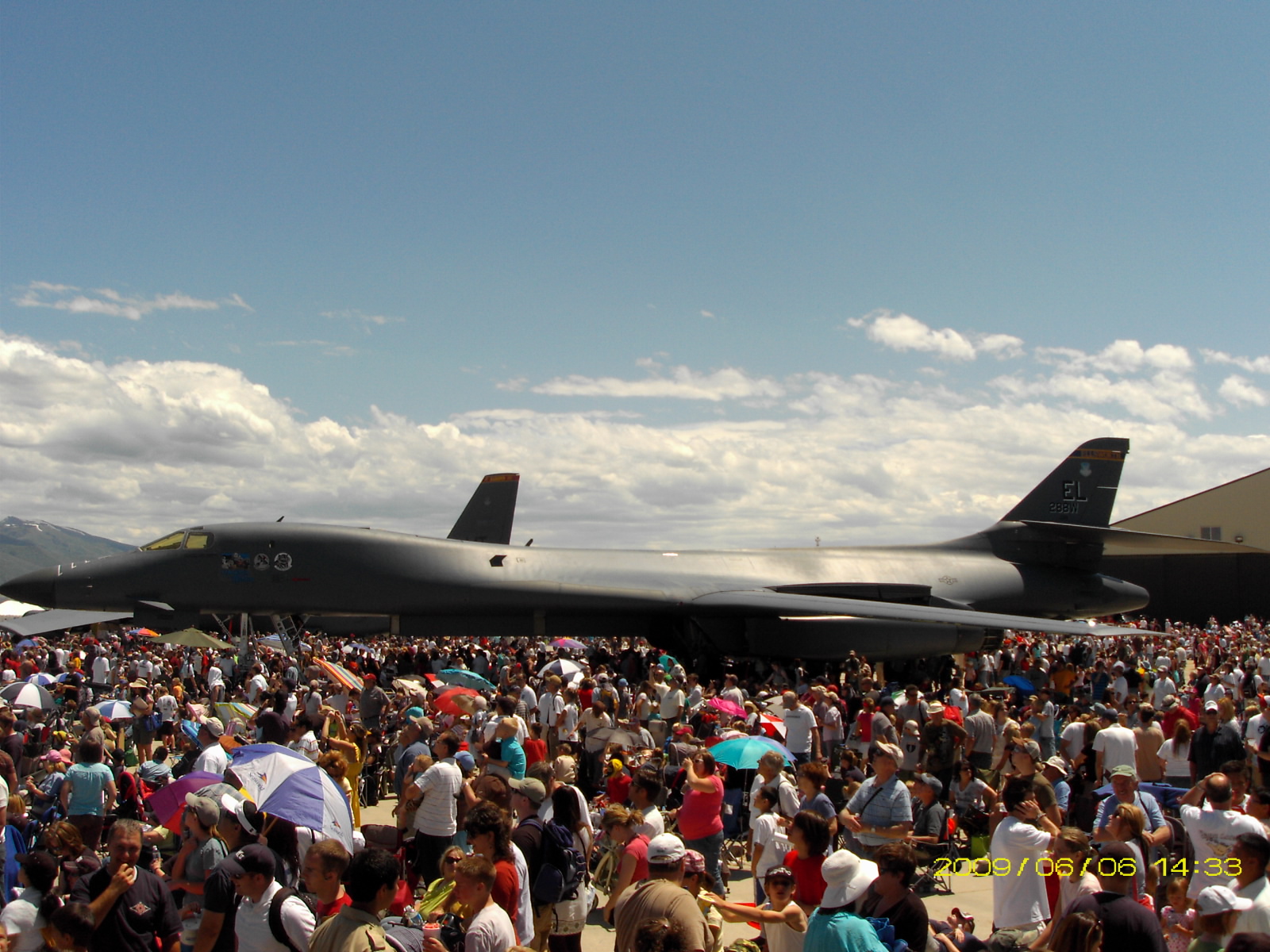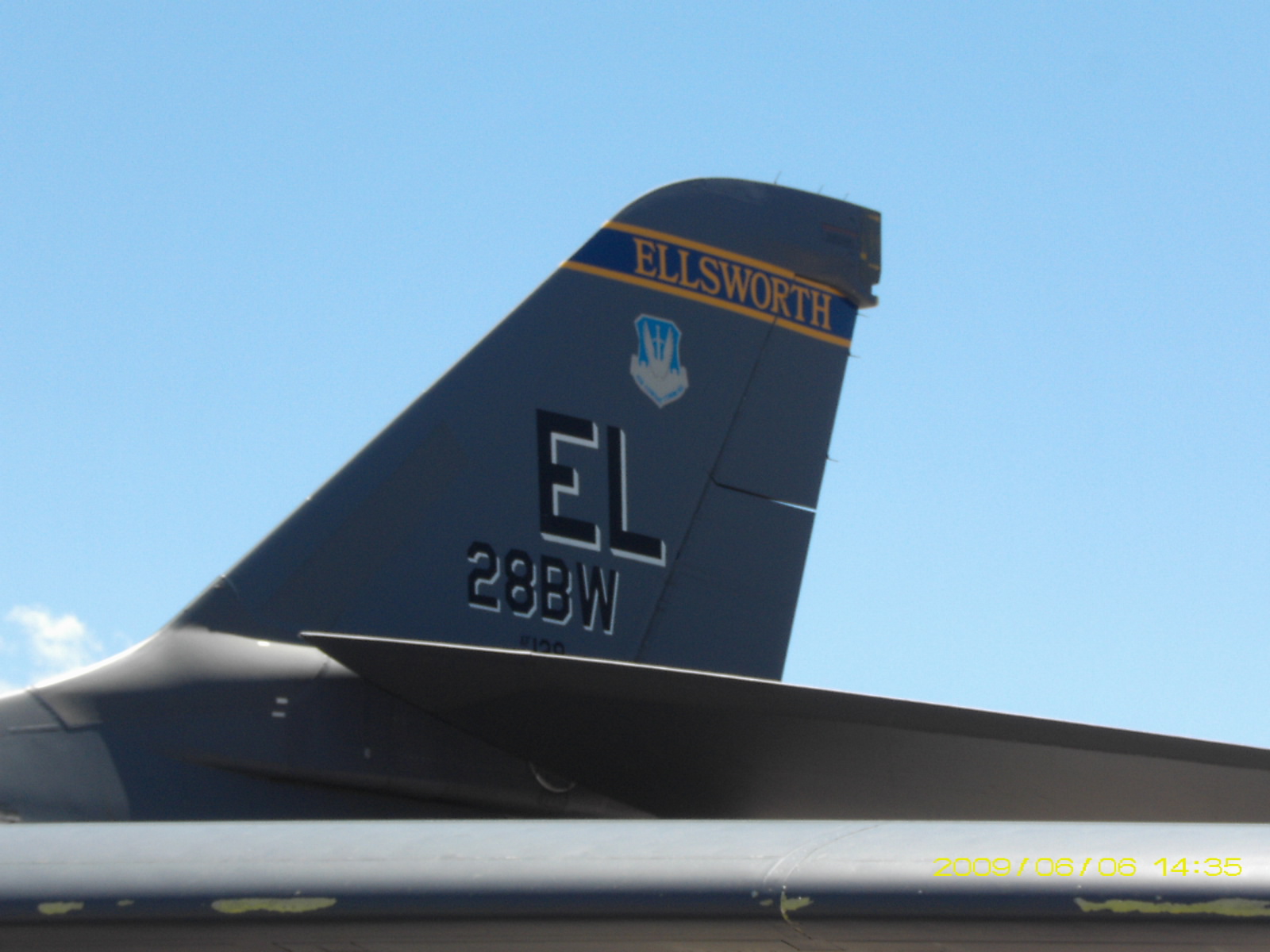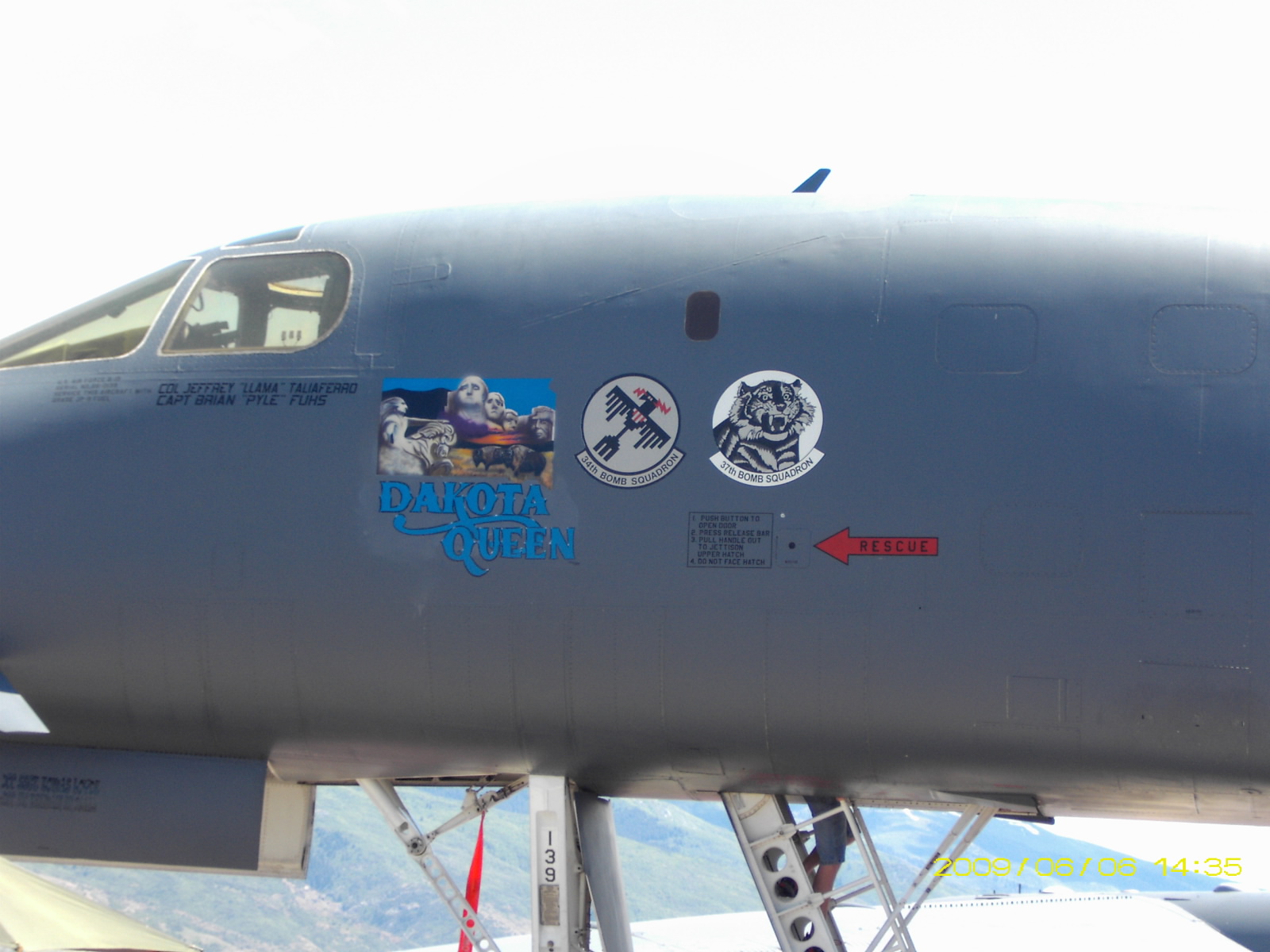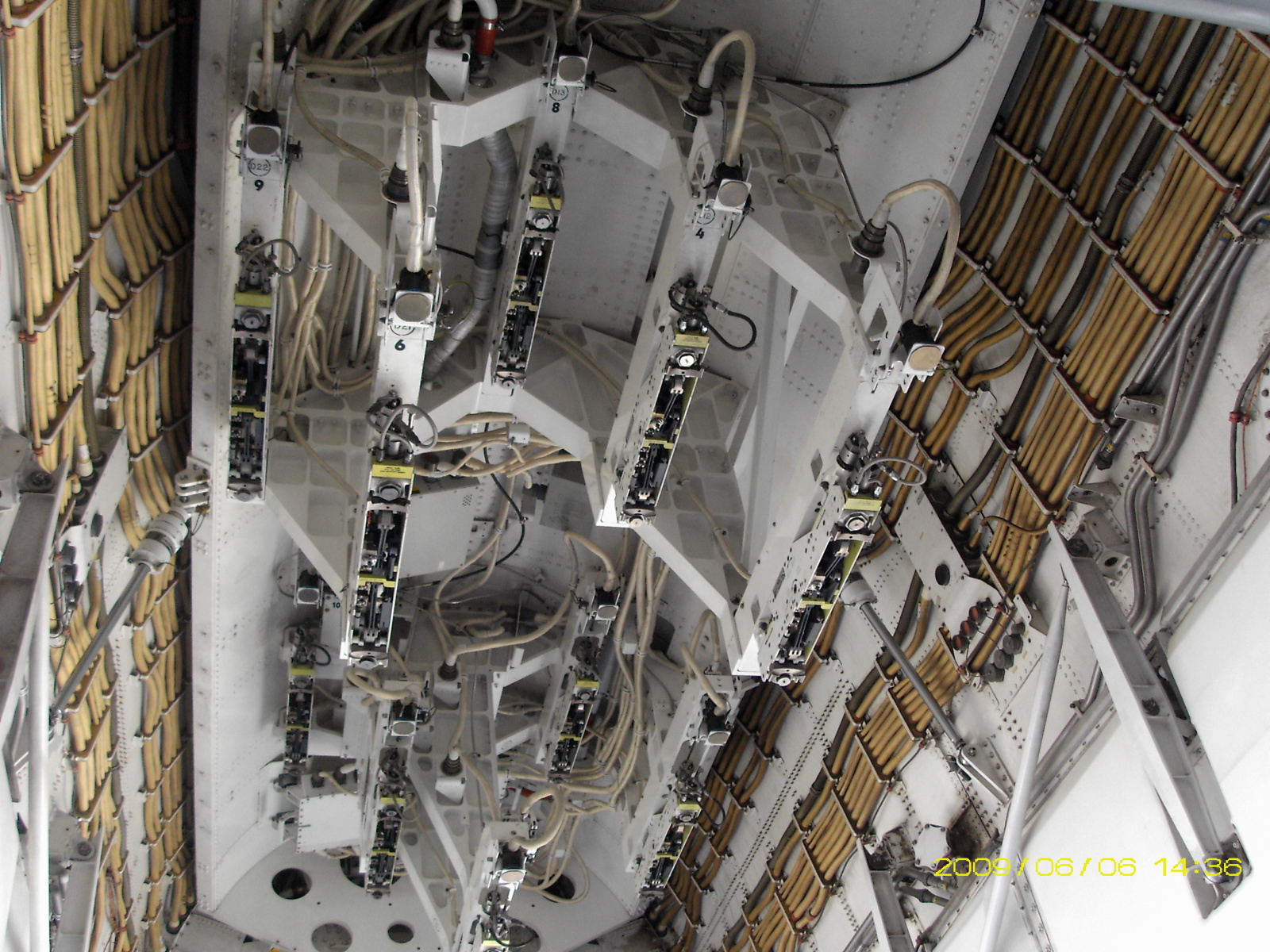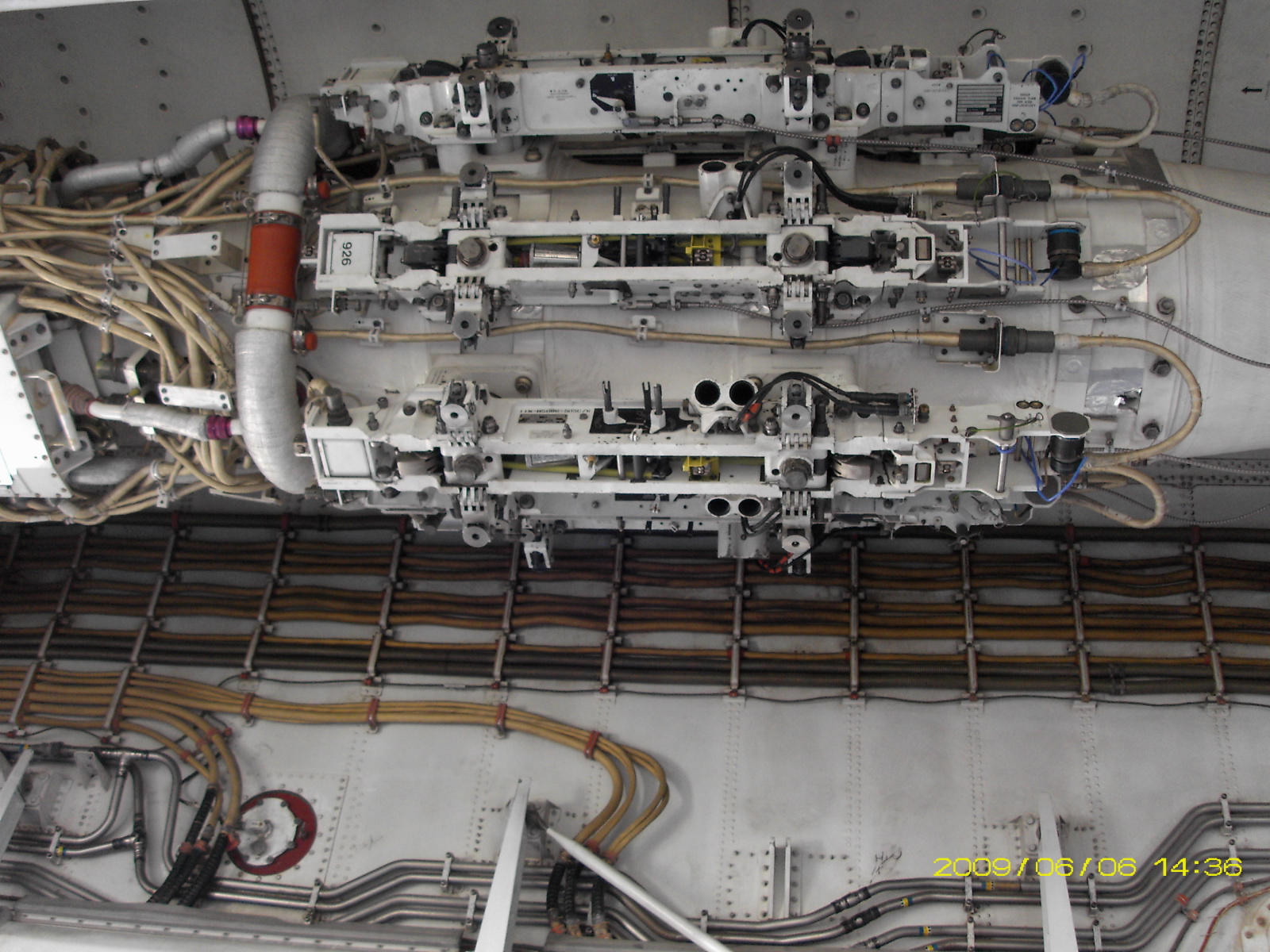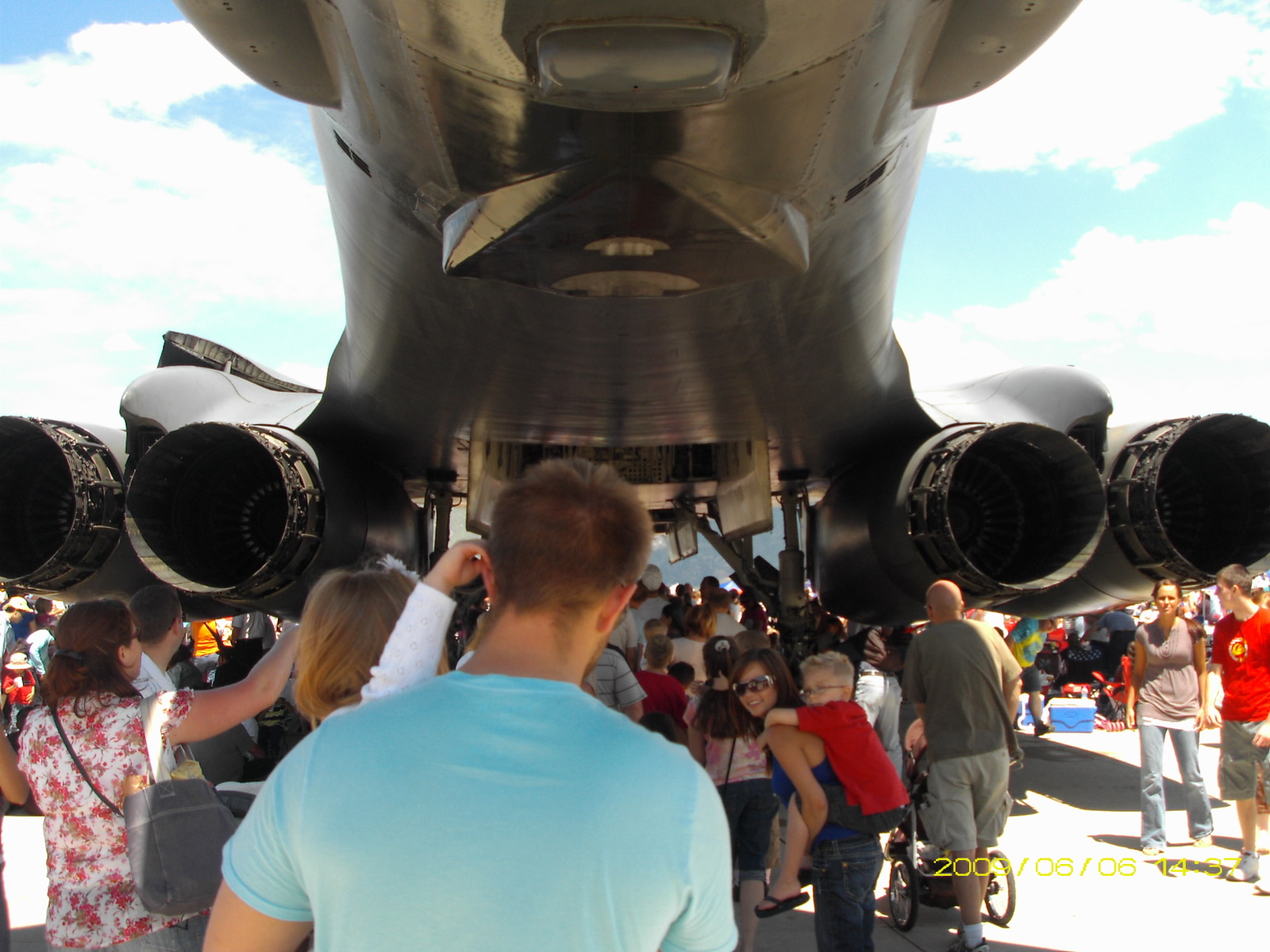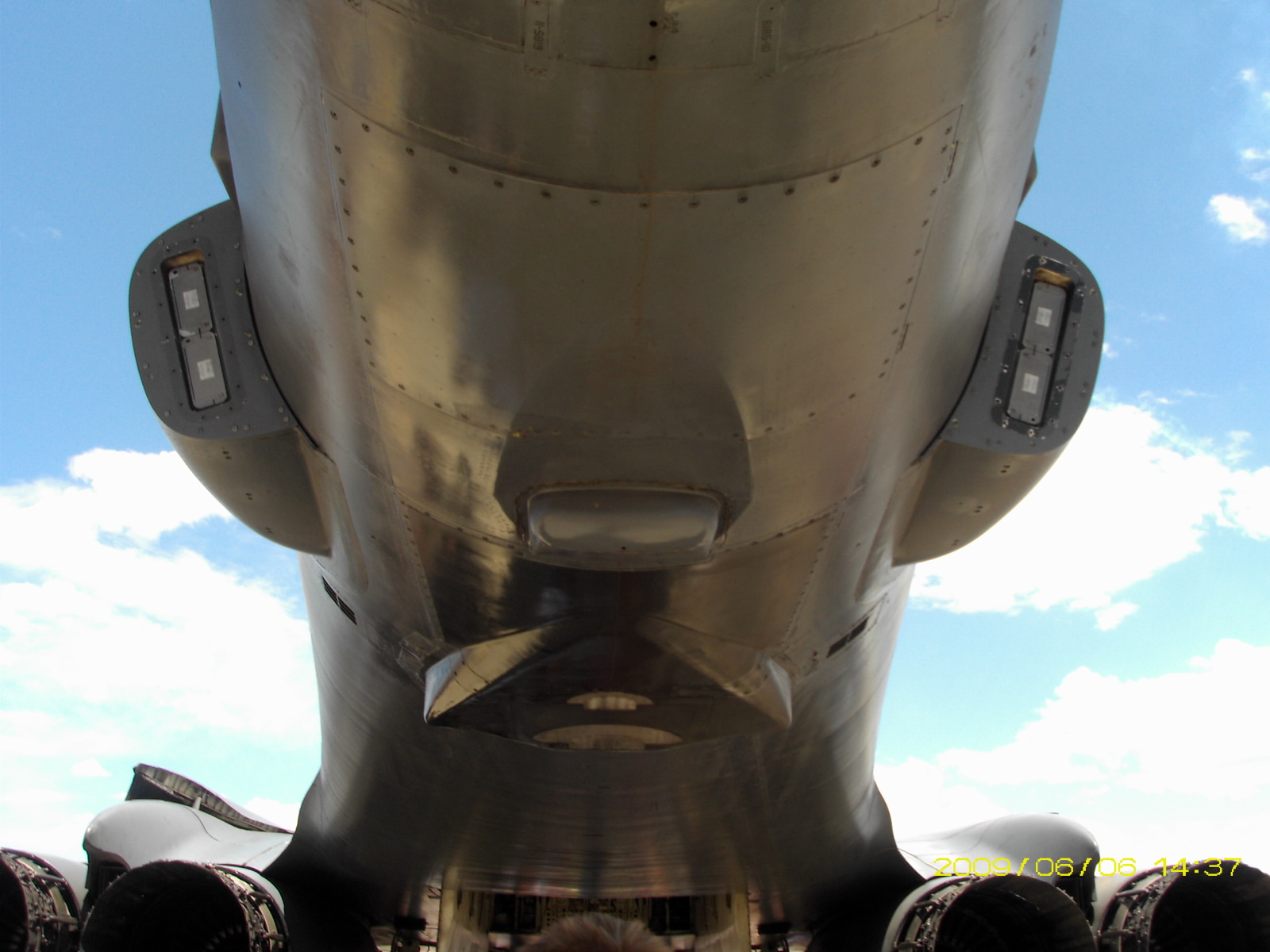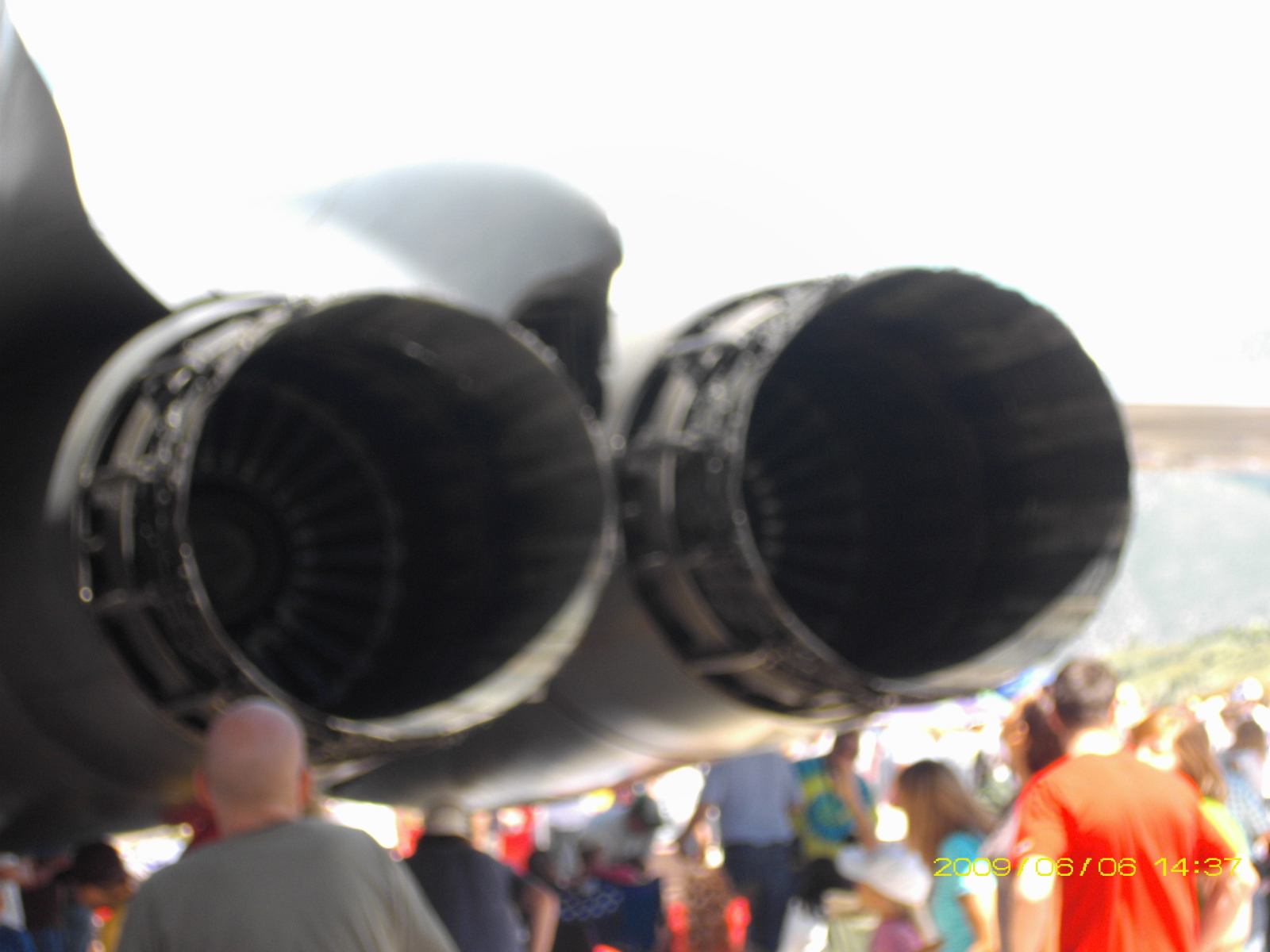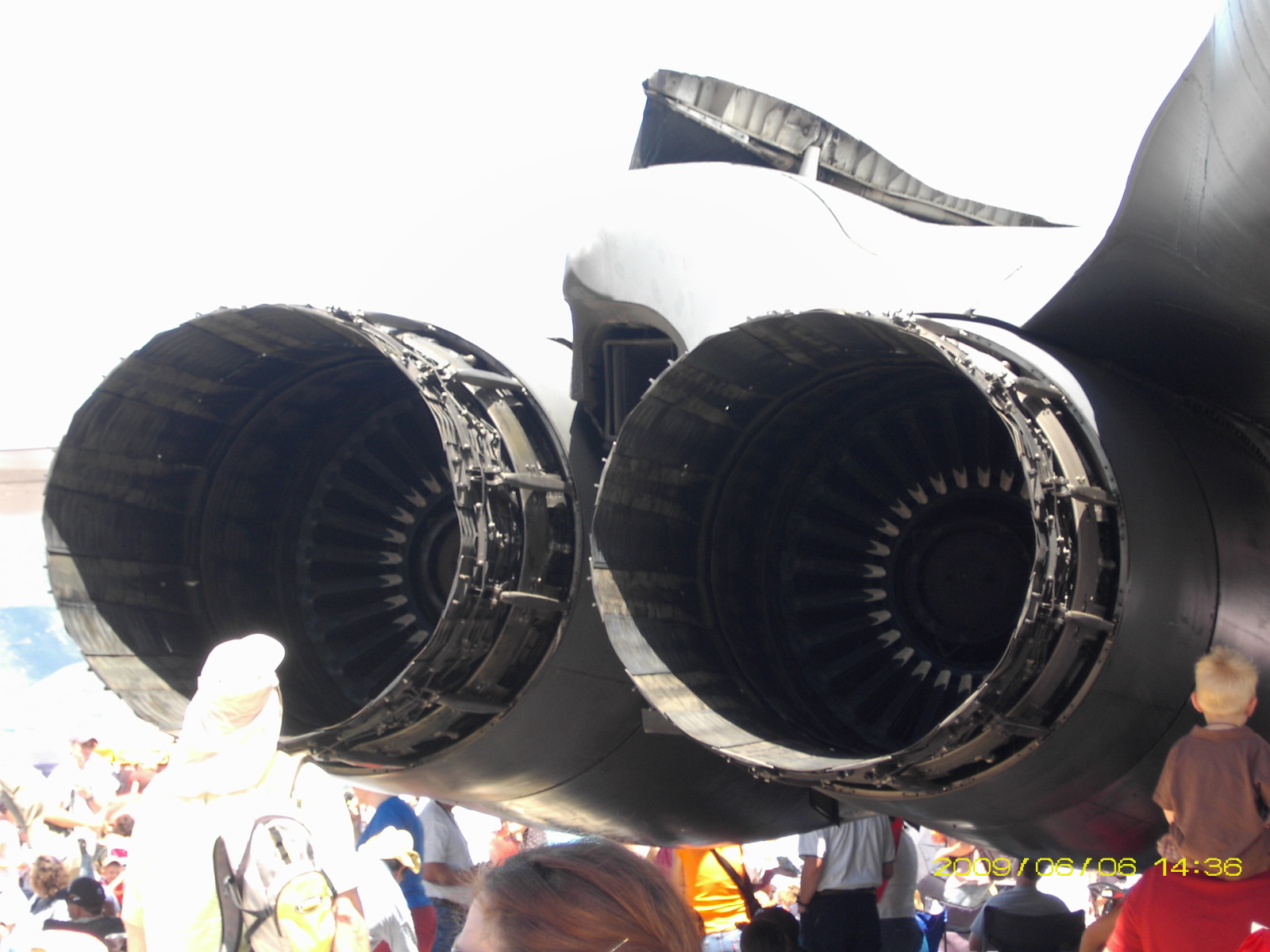 |
|
 |
|
|
|
|||
|
General Characteristics Primary Function: Long-range, multi-role, heavy bomber Contractor: Boeing, North America (formerly Rockwell International, North American Aircraft); Offensive avionics, Boeing Military Airplane; defensive avionics, EDO Corporation Power plant: Four General Electric F101-GE-102 turbofan engine with afterburner Thrust: 30,000-plus pounds with afterburner, per engine Wingspan: 137 feet (41.8 meters) extended forward, 79 feet (24.1 meters) swept aft Length: 146 feet (44.5 meters) Height: 34 feet (10.4 meters) Weight: approximately 190,000 pounds (86,183 kilograms) Maximum Takeoff Weight: 477,000 pounds (216,634 kilograms) Fuel Capacity: 265,274 pounds (120,326 kilograms) Payload: 75,000 pounds ( 34,019 kilograms) Speed: 900-plus mph (Mach 1.2 at sea level) Range: Intercontinental Ceiling: More than 30,000 feet (9,144 meters) Armament: 84 500-pound Mk-82 or 24 2,000-pound Mk-84 general purpose bombs; up to 84 500-pound Mk-62 or 8 2,000-pound Mk-65 Quick Strike naval mines; 30 cluster munitions (CBU-87, -89, -97) or 30 Wind-Corrected Munitions Dispensers (CBU-103, -104, -105); up to 24 2,000-pound GBU-31 or 15 500-pound GBU-38 Joint Direct Attack Munitions; up to 24 AGM-158A Joint Air-to-Surface Standoff Missiles Crew: Four (aircraft commander, copilot, and two weapon systems officers) Unit Cost: $283.1 million (fiscal 98 constant dollars) Initial operating capability: October 1986 Inventory: Active force, 66 (test, 2); ANG, 0; Reserve, 0 |
|||
